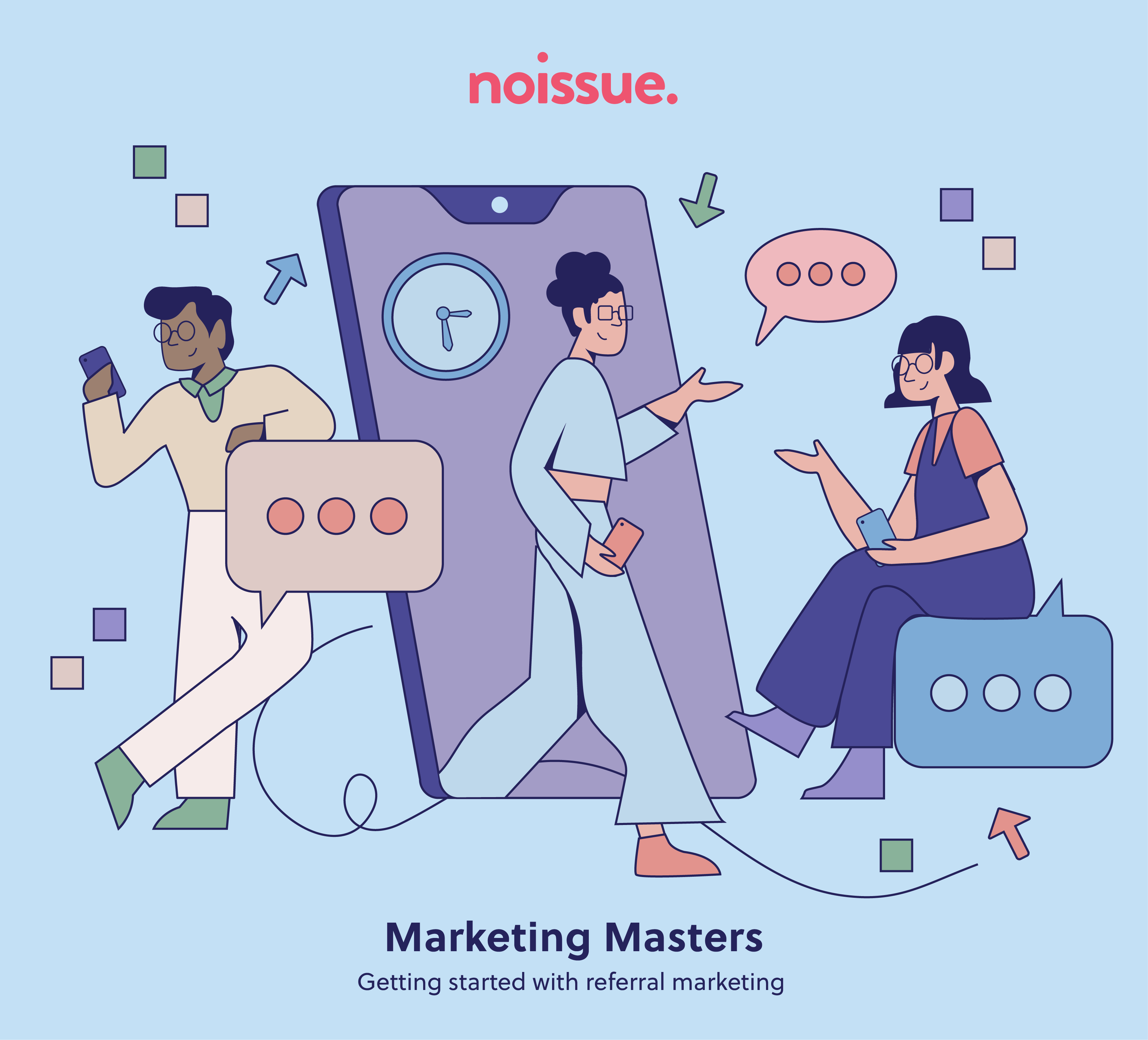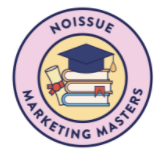
How to Get Started with Word-of-Mouth and Referral Marketing
Want to drive awareness and sales around your brand? Then word of mouth marketing is your new best friend. Here's how to create a strategy for it.
By Francesca Nicasio — 08 July, 2021
Word-of-mouth and referrals are some of the best cost-effective ways to drive awareness and sales in your business.
Industry data backs this up. According to Nielsen, 92% of consumers believe recommendations from friends and family over advertisements.
That’s a figure no business can ignore, so if you currently don’t have any practices designed to drive word-of-mouth and referrals, it might be time to rethink your strategy.
What are word-of-mouth and referral marketing? 💬
Referral marketing falls under word-of-mouth marketing (WOM). They are complementary, but have distinct characteristics.
It’s easy to confuse the two since both strategies enable companies to leverage existing customers as advocates.
Let’s look at the definitions more closely.
Word-of-mouth marketing is more organic or passive. The goal here is to create conversations around your brand through your existing customers, who, with their kind words, help generate new followers.
Referral marketing, on the other hand, is more proactive. You don’t wait until your customers help you out. You take matters into your own hands and run the show. How? By using incentives to encourage your followers to spread the word about the greatness of your products.
Referral marketing is a favorite among marketers, because it’s highly effective in driving leads. According to Social Media Today:
- 60% of marketers cite referral programs as a source of leads.
- Marketers rate referrals as the second-best source of quality leads.
- More than half of marketers (54%) report that referral programs are more cost-effective than other channels.
What makes WOM and referral marketing different from other marketing tactics? 📈
WOM, and even referrals, feel more authentic because they come from actual conversations between people instead of salesy materials, such as PPC and social media ads.
The main reason why these two strategies work better than traditional sales tactics is because they nudge new and potential customers to check out your business. Yes, these people will come to you with a certain expectation, but it also means they’re more receptive than cold prospects.
To put it simply: Leads from these sources don’t require as much convincing as cold prospects do.
What are the steps ecommerce merchants should take to improve word-of-mouth and referrals? 🤝
Having an incredible product and excellent customer support are some of the passive ways to get the word out on how fantastic your brand is. You should, however, find more ways to speed things along.
The following strategies will help you blend WOM and referral practices into your existing campaigns.
1. Reach out to thought leaders and influencers in your industry
WOM and influencer marketing complement each other. Word-of-mouth is about sharing information and stories, and influencers and thought leaders thrive on sharing content on their platform of choice.
Another reason why it works is that younger generations listen more to these new-age celebrities because they feel more like a friend looking out for your well-being.
One of the best DTC brands to leverage influencer marketing and WOM is Glossier. Since its founding, the makeup brand hasn’t relied much on traditional paid advertising. Glossier gets 80% of its growth and sales from WOM marketing.
They post videos or photos of famous individuals, ranging from micro-influencers to larger than life figures (hello, Michelle Obama). It gets their audience thinking, “If these women use Glossier, then why shouldn’t I?”
2. Encourage User-Generated Content (UGC)
User-generated content or UGC, refers to content your brand’s loyal followers create. You don’t have to constantly think of new things to post on Instagram or TikTok. These platforms can serve you plenty of material to work with coming from your audience.
UGC is also highly valuable to consumers since 93% of them consider it when making purchase decisions.
So now, the question is how do you incorporate WOM into your UGC strategy? Simple. Give credit to your users. Reposting their content is usually enough incentive. But if you want to go the extra mile, you can start a contest and offer your customers a chance to win a free product or gift card to your store if they submit a photo or video of themselves using your product.
Look at how Laura Mercier’s simple branded hashtag challenge on TikTok was able to put their product in front of 8.2billion viewers.
3. Ask for reviews and share them
Seventy percent of consumers rely on reviews rather than sales pitches, so why not be more proactive in asking for them?
Reviews play a crucial role in helping businesses increase their online presence. They boost SEO as they drive traffic to your website and help you reach audiences you wouldn't have had access to.
Not to mention, they make great social proof. As the saying goes people “gotta see it to believe it.” And just so you know, 94% of online shoppers favor brands that receive positive reviews.
That's not all — you can also repurpose testimonials (video or written) and weave them into your website. Just take a look at how this retail management solution makes you want to sign up after reading this testimonial from a client:
It may be hard at first, but you can create a system for requesting ratings and reviews. Just remember to make the process easy for them. For example, you can send your customers an email thanking them for their purchase, then include a review button to make the experience smoother for them.
4. Provide a reward
Incentives are an excellent way to give your customers a reason to talk about you.
You can reward them with a free gift or discount in return for referrals. Even if the reward is small, people are more likely to do something if it provides them value.
Here's a good example: Wool Overs gives out 20% to both the referrer and the referral. You can see how straightforward it is, with no fancy statements or tricks.
Another thing is that a fantastic loyalty rewards program may encourage people to tell their friends and family about it. In fact, you don't always have to ask for referrals. All you need to do is snag their attention with a snazzy offer.
5. Sponsor or participate in special events
It's not uncommon for brands to support events such as trade shows, groups, and charity causes to hit their business goals and gain an edge over their competitors.
Plus, it makes for a wonderful WOM advertising strategy.
There are so many advantages to being a sponsor. One of the significant benefits is that you'll have guaranteed access to a large audience of potential customers. Additionally, it is more affordable than hosting your own event.
However, you need to make sure you're putting yourself in front of the right audience. Pick out events where you're likely to find your target market.
For instance, if your brand is under the health and fitness industry, a yoga festival is a good event to sponsor.
6. Build a community
Most people who join your community are already brand advocates. These individuals with emotional ties to your brand will willingly buy from your company and consume your content.
So you might be wondering why else should you build a community if it only gathers people who are already buying your products?
First, you make it easier for your followers to tell their friends and family about your company. Community members have a greater likelihood of spreading the word to bring in new members.
Final words
Using word-of-mouth and referral marketing isn't something you can do at random. Plan out how you will incorporate them into your existing business plan.
If you follow the tactics above, you'll quickly realize these strategies certainly are gifts that keep on giving. Once you've set them in motion, all you have to do is sit back and watch how they work.
Enjoyed this article? Check out some of our other Market Mastering stories:
A Small Business Owner’s Guide to eCommerce SEO
6 Steps to Building a Community Around Your Small Business
Getting Started with Email Marketing in 2021
